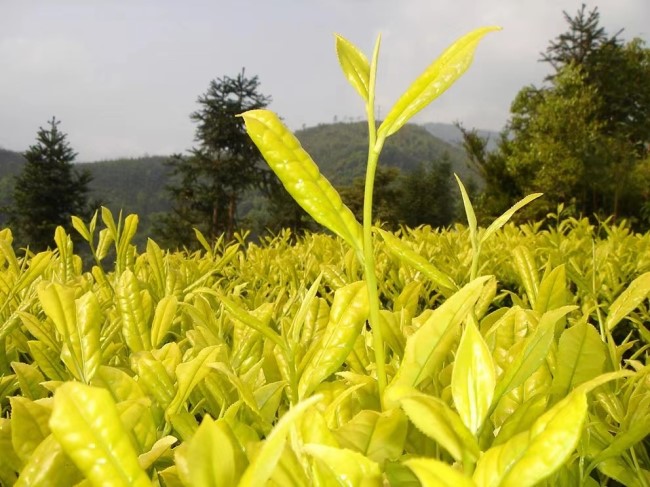Liquid gold: Guangyuan's yellow tea redefines luxury
People have been cultivating tea in Guangyuan, Sichuan province, Southwest China for nearly 3,000 years. The city was a key stop on the ancient Tea Horse Road, shaping its rich tea culture.

Yellow tea in Wangcang county, Guangyuan, Sichuan province [Photo provided to cngy.gov.cn]
In 2024, Guangyuan's total tea plantation area reached approximately 33,300 hectares, with 15,300 hectares certified as green or organic. Thanks to its pristine environment, the city's Wangcang county has earned the prestigious title of "hometown of Chinese yellow tea".
Guangyuan yellow tea, known for its distinctive orchid-like shape, boasts a striking golden hue in both its appearance and brew, with jade-yellow leaves and an amino acid content exceeding 7 percent—two to three times that of ordinary green tea.
Dubbed the "gold of tea," its premium variety, "Mumen Huangya", commands a price of up to 40,000 yuan ($5,510.32) per kg, requiring an astonishing 300,000 tender buds to produce just one kg of finished tea, making it a luxury item.
The thriving yellow tea industry has transformed Guangyuan's natural assets into economic prosperity for local farmers. At the Xingquan Tea Processing Factory in Wangcang county, the fragrance of freshly processed tea fills the air as workers carefully refine the leaves through multiple production stages.
"Our factory processes up to 600 kg of fresh leaves daily, supplying major cities like Beijing, Shanghai, and Chengdu," said Zhang Junxiu, the factory director. "This year, our projected output value is expected to exceed five million yuan."
With its time-honored heritage and growing market appeal, Guangyuan's yellow tea is set to make an even greater impact on the global tea industry, offering a taste of history and excellence in every cup.
